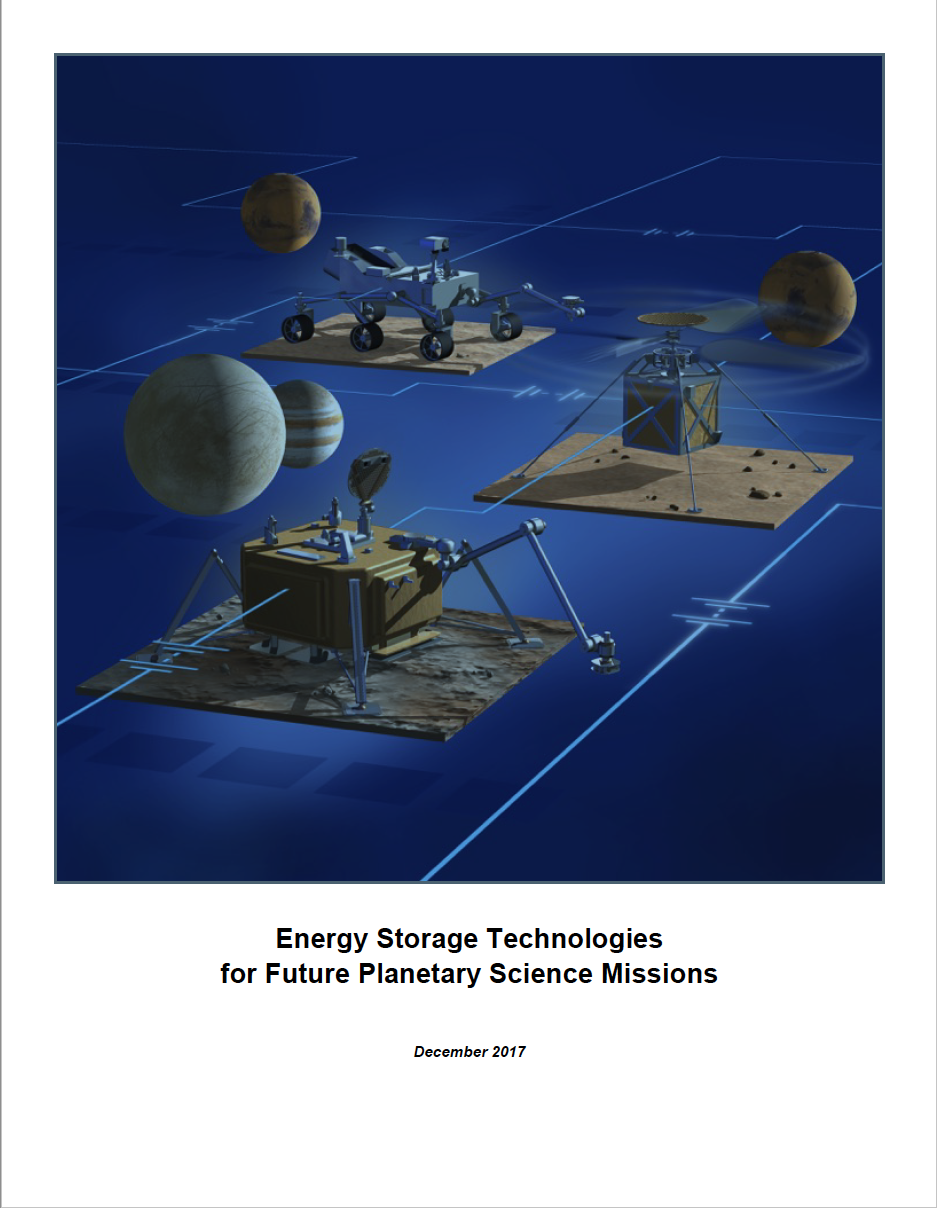Energy Storage Technologies for Future Planetary Science Missions

| Credit | NASA/Jet Propulsion Laboratory-Caltech |
|---|---|
| Language |
|
Publication No.: JPL D-101146
Clearance No.:
URS No.:
Background
Since the launch of Explorer in 1958, energy storage devices have been used in all of robotic spacecraft either as a primary source of electrical power or for storing electrical energy. The three main devices are primary batteries, rechargeable batteries, and capacitors. In addition, fuel cells are used in human space missions, but so far have not been useful for robotic missions. Primary batteries are typically used in missions that require a single use of electrical power for a period of a few minutes to several hours and in some cases days. Such missions include launch vehicles, planetary probes, and sample return capsules. Rechargeable batteries are used mainly in solar-powered missions to provide electrical power during eclipse periods and for load leveling. Rechargeable batteries are also used in in radioisotope-powered missions for load leveling. Capacitors were used in earlier radioisotope-powered missions and are also used on the Pluto-New Horizons mission for applications that required repeated high-power pulses for short durations (seconds).
The NASA Planetary Science Division (PSD) is considering a number of ambitious missions to a variety of destinations in our solar system, including outer planets, inner planets, Mars, and small bodies, and requested an assessment of the space energy storage systems required to enable/enhance the capabilities of future planetary science missions (>2025).
Study Overview
The specific objectives of this assessment are: a) review the energy storage system needs of future/next decadal planetary science mission concepts, b) assess the capabilities and limitations of state of practice energy storage systems, c) assess the status of advanced energy storage technologies currently under development and their potential capabilities and limitations, and d) identify and recommend candidate energy storage system technologies required for future planetary science missions.
The assessment team consisted of subject matter experts in the areas of mission planning, spacecraft power systems engineering, and space energy storage system technologies. The team members were selected from NASA (HQ, Jet Propulsion Laboratory, Glenn Research Center, Langley Research Center, and Goddard Space Flight Center), Aerospace Corporation, Johns-Hopkins University-Applied Physics Laboratory, DoD, and in industry. The assessment team held four meetings with the energy storage technologists from academia, national laboratories and industry to: a) obtain information about potential next decadal planetary science missions and their energy storage system needs, b) determine the capabilities of state-of-practice (SOP) space energy storage systems, c) assess the status and potential capabilities of advanced energy storage systems under development at various national laboratories, industry, and universities, and d) summarize the findings and compile the recommendations.
